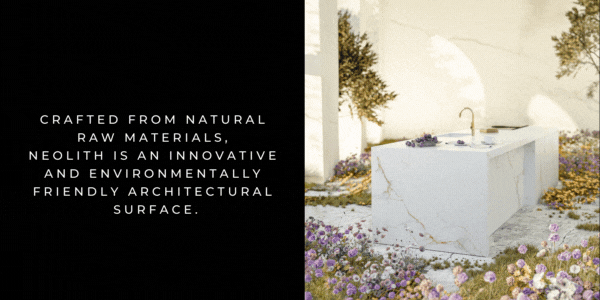Learn the Basics of How to Plan with Purpose: Intentional Interior Design Explained
When light falls just so—casting a warm glow across the floor, illuminating a perfectly placed armchair overlooking a garden—the effect is not by chance. Nor is the intuitive flow of a well-appointed kitchen or the calming balance of textures and finishes throughout a space. These moments are the result of Intentional Design—a concept rooted in clarity, vision, and purpose.
Planning with intention starts long before the first tile is chosen or the first paint swatch is considered. It begins with an understanding of how a space will be lived in and loved. Every element, from the largest architectural statement to the finest detail, is part of a cohesive narrative built around functionality, mood, and lifestyle.
To help unpack the process of purposeful design, Melanie Ewing, founder of Chapters Interiors and the design education platform Chapters Academy, offers her expert insights on some of the most frequently asked questions from design-curious homeowners and renovators alike.
Colour and Texture
How is a colour palette chosen for a room?
Ewing explains that colour selection should begin with identifying the purpose of the room and the desired emotional tone. Whether the goal is a calm sanctuary or a vibrant entertaining space, the colour palette sets the mood. From there, one should consider fixed design elements and natural lighting.
For example, warmer hues like reds and ambers can infuse a space with cosiness and depth—perhaps through wood-look tiles or warm-toned accents. Using tools like the colour wheel, designers can explore complementary (e.g., blues and oranges) or analogous (e.g., blue, blue-green, green) schemes for harmonious results.
What role does texture play in the feel of a space?
“Texture brings soul to a space,” says Ewing. It’s more than just visual appeal—it adds emotional and tactile richness. Whether using soft linens, raw wood, glossy metals, or cool concrete, combining textures is key to creating a layered, dynamic environment. For instance, pairing concrete-look porcelain with brushed metal can evoke a modern, urban mood, while rustic wood and patterned tiles bring warmth to cottage-style interiors.
Functionality and Design
How can limited or small spaces be made more functional?
Designing smaller areas requires strategic thinking. Ewing recommends decluttering, embracing minimalism, and choosing furniture that serves multiple purposes. Think vertical storage, smart zoning, and adaptable layouts that make a space feel larger and more efficient.
What are examples of multi-functional design elements?
Multi-functional design hinges on flexibility. Pieces like storage ottomans, convertible desks, and room dividers that double as shelving units can transform how a space is used without compromising on aesthetics. “Function doesn’t mean sacrificing beauty,” says Ewing. “It means letting beauty work harder.”
Creating Mood and Atmosphere
How can design evoke specific moods in a space?
Every room has a potential emotional tone. Lighting, layout, colour, and materials all play into this. Whether crafting a calming retreat or a vibrant social hub, combining design elements with intention is essential to evoking the right atmosphere.
How do lighting and materials shape ambience?
Lighting—both natural and artificial—is pivotal. Warm light fosters relaxation, while cooler lighting can energise a space. Materials influence how light is absorbed or reflected. Glossy surfaces amplify brightness; matte finishes create a softer mood. Together, lighting and materials become the orchestra behind the room’s emotional resonance.
Personalisation and Style
How is personal style reflected while maintaining design harmony?
A well-designed space should feel uniquely yours. Ewing encourages starting with a neutral foundation and layering in personal elements—favourite colours, meaningful objects, or signature patterns. The key is consistency: repeat shapes, tones, and motifs to create a cohesive flow while allowing individuality to shine.
Trends and Timelessness
Which design trends are worth investing in?
According to Ewing, enduring trends are rooted in quality and connection to nature. “Natural materials, earth-inspired palettes, and timeless symmetry never fall out of favour,” she notes. Biophilic design, which integrates natural elements and promotes well-being, is more than a trend—it’s a philosophy that’s here to stay.
She also points to a growing preference for sustainable, wellness-focused interiors that prioritise comfort and emotional connection as much as visual appeal.
Designing Specific Spaces with Intention
How can high-use spaces like kitchens or bathrooms balance practicality with beauty?
Purpose-driven design begins with understanding how the space will be used. In kitchens, this might mean prioritising traffic flow, durable materials, and clever storage. In bathrooms, it could mean maximising light, maintaining cleanliness, and offering comfort through thoughtful detailing.
What about designing entryways or hallways?
“An entryway is your home’s first impression,” Ewing says. To create one that is both stylish and practical, incorporate smart storage, mirrors to reflect light, art that sets the tone, and textures that invite. Baskets, hooks, and slimline furniture can bring organisation and elegance together effortlessly.
A Final Word from Italtile
At Italtile, purposeful planning is more than a design philosophy—it’s a way to create spaces that tell stories, reflect lifestyles, and endure the test of time.
Without intentionality, even the most beautiful materials can feel disjointed. But with vision and guidance, every tile, finish, and fixture becomes part of a greater symphony—one that blends function with elegance, comfort with character.
Italtile invites homeowners to:
-
Experiment with design tools online to visualise ideas.
-
Visit showrooms to consult with design-certified experts.
-
Take advantage of their free Professional Residential Agent Service for personalised support.
Because every beautiful space begins with a purposeful plan.
Plan with purpose, design with intention, and live beautifully.
Contact: Italtile
You may also like.
You might also like...
-
Refined Coastal Living: La Grange Interiors Transforms Camps Bay Villa into a Serene Sanctuary

A breathtaking coastal retreat in Camps Bay has been transformed into a warm, contemporary sanctuary thanks to the refined vision of Sumari Krige of La ...
-
Tonic Design and Zuckerman Sachs Architects collaboration

Some homes are defined by their architecture, others by their outlook. In this case, it was always about the view. Purchased for its sweeping panorama ...
-
Giava Interiors: 5 Ways to Turn Your Joburg Home into a Lux Retreat

City life in Joburg can be electric, but when you return to your home after an exhausting day in the office and on the road, ...
-
Clean Lines, Bold Living: Bespoke Furniture by Zest & Honey

Clean lines. Bold curves. Subtle angles. These are the elements that quietly yet powerfully define the atmosphere of a home. At Zest & Honey Interior ...


























